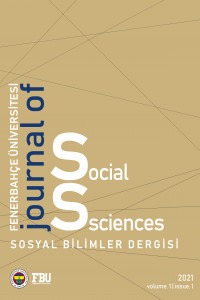Nükleer Enerjinin Karbon Ayak İzini Azlatmadaki Rolü Hayati mi? En Yüksek Nükleer Enerji Tüketen On İki Ülke İncelemesi
Son yılların en öne çıkan sorunu, tartışmasız çevresel bozulmadır. Çevresel bozulmanın temel sebebi ise, fosil yakıtların kullanımıdır ve bu yakıtlar enerji söktörünü domine eden enerji türüdür. Bu durumun yanı sıra, gideerek artan bir enerji talebi söz konusudur ve bu durum politika karar vericileri, iklim değişikliğine karşı ekonomik kalkınma arasında karar vermeye zorlamaktadır. Ayrıca, Paris Anlaşması’nın, ülkelerin CO2 emisyonlarını azaltmaları konusunda bir baskı oluşturması, ülkelerin temiz enerji kaynakalrına geçişini hızlandırmıştır. Bu noktada, nükleer enerji temiz enerji sınıflamasında yer aldığı için ön plana çıkmıştır. Ancak, nükleer enerjinin temiz enerji olup olmadığı da bir tartışma konusudur. Bir nükleer kaza olması durumunda, çevreye en çok zarar veren enreji türü haline gelir. Dolayısıyla bu çalışma, nükleer enerjinin karbon ayak izini azalma eksenindeki rolünü incelemeyi amaçlamaktadır. Bu sebeple, dünyada ve nükleer enerjiye en fazla sahip on iki ülke için nükleer enerjinin payı ve CO2 emisyonları betimsel analiz ile incelenmiştir. Sonuçlar, nükleer enerji kullanılarak kaçınılan CO2 emisyonlarının bu ülkeler için hayati olmadığı şeklinde yorumlanabilir. Ayrıca, bu emisyonlar yenilenebilir enerji kaynaklarından da sağlanabilir.
Anahtar Kelimeler:
nükleer enerji, karbon ayak izi, temiz enerji, çevresel bozulma
Is the Role of Nuclear Energy Vital in Reducing Carbon Footprint? An Examination of the Twelve Highest Nuclear Energy Consumption Countries
The crucial problem in the last few decades is environmental degradation unquestionably. The main cause of environmental degradation is burning fossil fuels, and they dominate the energy sector. Besides, energy demand has been increasing, and this situation forces policymakers to make a decision on economic development versus climate change. Also, the Paris Agreement put pressure on the countries to reduce CO2 emissions, so it accelerated countries' transition to clean energy resources. At this point, nuclear energy comes to the forefront as it is classified as clean energy status. On the other hand, the notion of nuclear energy is clean or not is a matter of debate. In case of a nuclear accident, it becomes the most environmentally damaging resource. Thus, this study aims at investigating the role of nuclear energy on the axis of reducing carbon footprint. For this purpose, the values and the shares of nuclear energy in the World and the top twelve nuclear energy consumption countries, and also their CO2 emissions are examined by using descriptive analysis. The results should be interpreted as the CO2 emissions avoided by using nuclear energy is not vital for these countries. Moreover, the emissions could be provided by renewable energy resources.
Keywords:
nuclear energy, carbon footprint, clean energy, environmental degradation,
___
- Bandyopadhyay, A., Rej, S., Villanthenkodath, M. A., & Mahalik, M. K. (2022). The role of nuclear energy consumption in abatement of ecological footprint: Novel insights from quantile-on-quantile regression. Journal of Cleaner Production, 358, 132052. https://doi.org/10.1016/j.jclepro.2022.132052
- Ekosfer Derneği (2022). Nükleer Enerji Ve Türkiye.
- European Commission (2019). The European Green Deal. Communication from the Commission to the European Parliament, The Council, The European Economic and Social Committee and the Committee of the Regions.
- European Commission (2022).EU Taxonomy accelerating sustainable invesments.
- Hao, Y., Chen, P., & Li, X. (2022). Testing the environmental kuznets curve hypothesis: The dynamic impact of nuclear energy on environmental sustainability in the context of economic globalization. Energy Strategy Reviews, 44, 100970. https://doi.org/10.1016/j.esr.2022.100970
- IAEA /PRIS (2023). Power Reactor Information System. https://pris.iaea.org/PRIS/CountryStatistics/CountryStatisticsLandingPage.aspx ( Available at: 24.05.2023).
- IEA (2023). IEA, World electricity generation mix by fuel, 1971-2019, IEA, Paris https://www.iea.org/data-and-statistics/charts/world-electricity-generation-mix-by-fuel-1971-2019, IEA. Licence: CC BY 4.0
- IEA (2021), Electricity Information: Overview, IEA, Paris https://www.iea.org/reports/electricity-information-overview, License: CC BY 4.0
- IPCC (2014). Climate Change 2014 Synthesis Report Summary Chapter for Policymakers.
- Ishida, H. (2018). Can Nuclear Energy Contribute to the Transition Toward a Low-carbon Economy? The Japanese Case. 8(1).
- Jaforullah, M., & King, A. (2015). Does the use of renewable energy sources mitigate CO 2 emissions? A reassessment of the US evidence. Energy Economics, 49, 711–717. https://doi.org/10.1016/j.eneco.2015.04.006
- Murshed, M., Saboori, B., Madaleno, M., Wang, H., & Doğan, B. (2022). Exploring the nexuses between nuclear energy, renewable energy, and carbon dioxide emissions: The role of economic complexity in the G7 countries. Renewable Energy, 190, 664–674. https://doi.org/10.1016/j.renene.2022.03.121
- Naimoğlu, M. (2022). The impact of nuclear energy use, energy prices and energy imports on CO2 emissions: Evidence from energy importer emerging economies which use nuclear energy. Journal of Cleaner Production, 373, 133937. https://doi.org/10.1016/j.jclepro.2022.133937
- Pata, U. K., & Samour, A. (2022). Do renewable and nuclear energy enhance environmental quality in France? A new EKC approach with the load capacity factor. Progress in Nuclear Energy, 149, 104249. https://doi.org/10.1016/j.pnucene.2022.104249
- Price, J., Keppo, I., & Dodds, P. E. (2023). The role of new nuclear power in the UK’s net-zero emissions energy system. Energy, 262, 125450. https://doi.org/10.1016/j.energy.2022.125450
- Sadiq, M., Wen, F., & Dagestani, A. A. (2022). Environmental footprint impacts of nuclear energy consumption: The role of environmental technology and globalization in ten largest ecological footprint countries. Nuclear Engineering and Technology, 54(10), 3672–3681. https://doi.org/10.1016/j.net.2022.05.016
- The Global Carbon Atlas (2023). Emissions. https://globalcarbonatlas.org/emissions/carbon-emissions/ (Available at: 27.05.2023).
- United Nations (2015). Paris Agreement.
- Usman, M., & Radulescu, M. (2022). Examining the role of nuclear and renewable energy in reducing carbon footprint: Does the role of technological innovation really create some difference? Science of The Total Environment, 841, 156662. https://doi.org/10.1016/j.scitotenv.2022.156662
- World Economic Forum (2023). The Global Risks Report 2023 Insight Report, 18th Edition.
- WNA (2022) World Nuclear Performance Report.
- WNA (2023). World Nuclear Association. https://world-nuclear.org/information-library/current-and-future-generation/nuclear-power-in-the-world-today.aspx (Available at: 24.05.2023)
- Wang, Q., Guo, J., Li, R., & Jiang, X. (2023). Exploring the role of nuclear energy in the energy transition: A comparative perspective of the effects of coal, oil, natural gas, renewable energy, and nuclear power on economic growth and carbon emissions. Environmental Research, 221, 115290. https://doi.org/10.1016/j.envres.2023.115290
- Yayın Aralığı: Yılda 2 Sayı
- Başlangıç: 2021
- Yayıncı: Fenerbahçe Üniversitesi
